New Technologies Unveiled
Just earlier this month, at the WWDC Global Developers Conference, Apple unveiled a series of new systems, including iOS 26, iPadOS 26, macOS 26, and more. Unlike previous years, this year’s updates from Apple are not just minor improvements but rather significant overhauls.
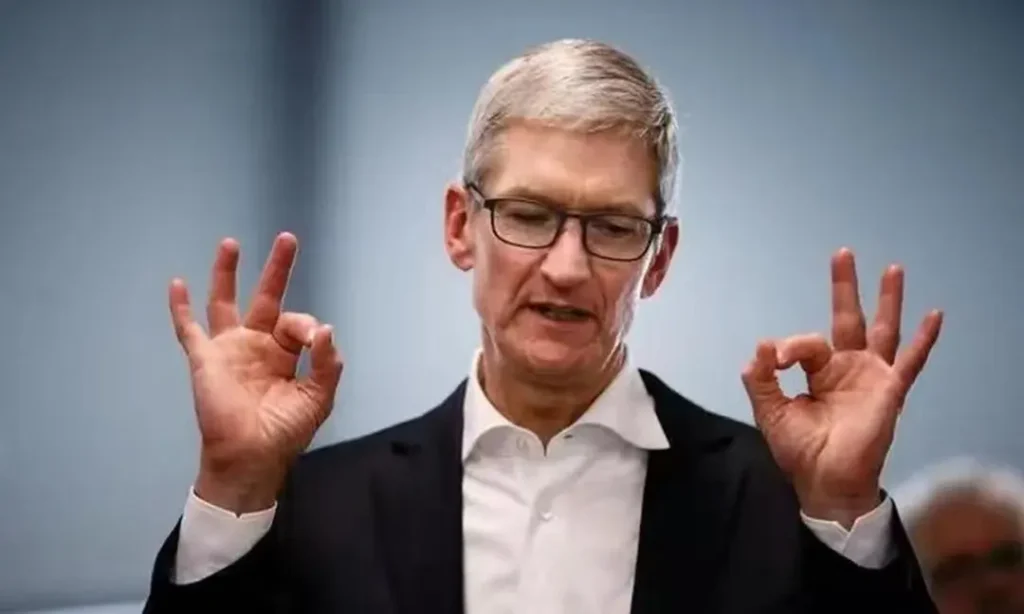
Especially notable is the system UI. The 全新的 “Liquid Glass” design language gives icons, widgets, and in-app Dock bars a shiny 3D glass effect with sparkling reflections. Even the drop-down notification center has been designed to feel like swiping down on a curved tempered glass screen.
But here’s something you might find hard to believe. Apple isn’t just focusing on the system; it also plans to create a particularly “Glass” version of the iPhone – the iPhone 20th Anniversary Edition, codenamed “Glasswing”.
In celebration of the 20th anniversary of the iPhone’s debut, Apple is reportedly developing a revolutionary product internally, codenamed “Glasswing” (meaning a butterfly with transparent wings). It will feature an all – glass design, significantly improved battery life, and be equipped with the evolved iOS 28 system.
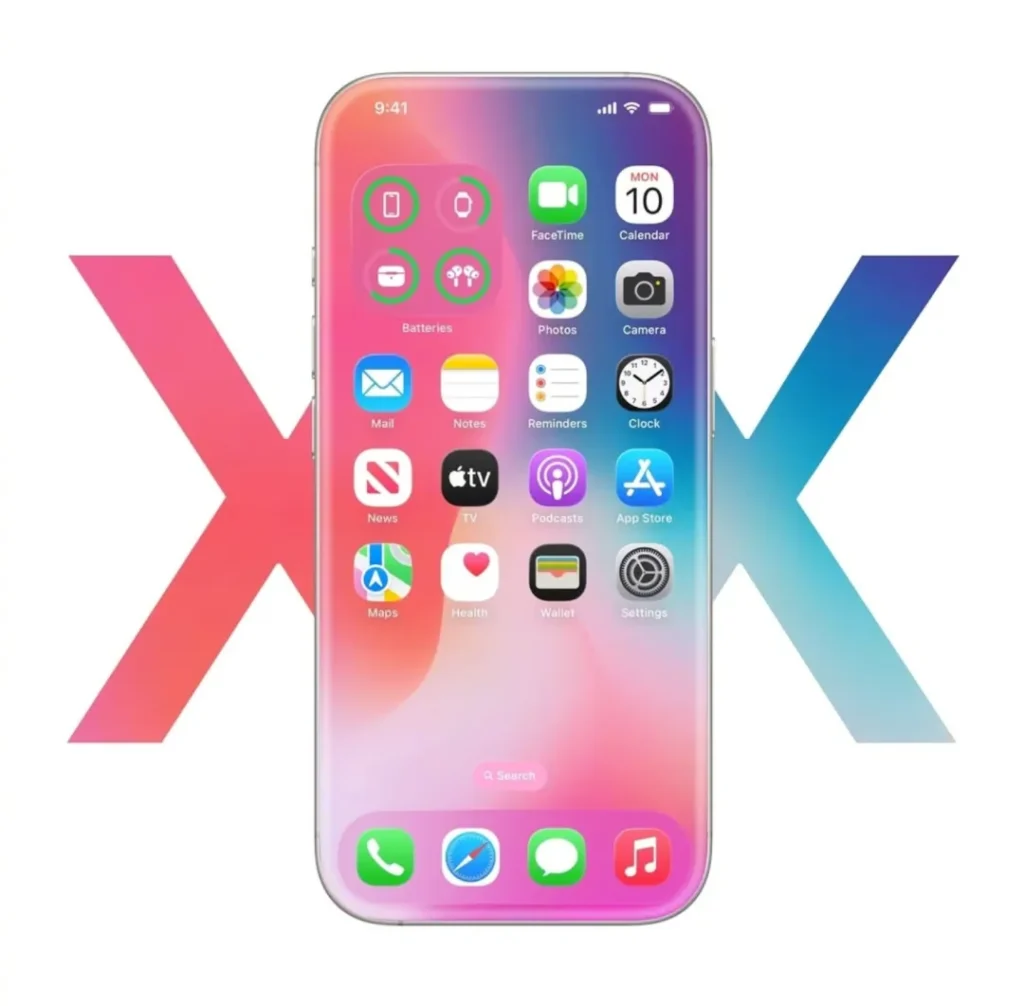
As we all know, for the 10th anniversary, Apple released the groundbreaking commemorative model, the iPhone X. With its notch display, full – screen gestures, and Face ID, it had a profound impact on the mobile phone industry, which needs no further explanation. Although it was officially a commemorative model, it can well be called a milestone product.
Now, for the upcoming 20th – anniversary edition, whether it will be named “iPhone XX” or “iPhone 20” is still unknown, as Apple often likes to change names at the last minute.

But one thing is certain: the first thing Apple will do with this phone is to hide Face ID and the front – facing camera entirely under the screen, completely getting rid of the notch or Dynamic Island.
Yes, the true full – screen iPhone that countless Apple fans have been longing for is really coming.

Admittedly, current under – screen camera technology is not yet perfect. The full – screen MIX new models that a rival brand has been testing for years still haven’t made it out of the lab.
However, Apple’s way of doing things is well – known. Its influence over the supply chain is extraordinary. As long as new technologies can be launched on the market, the results will surely be good.
Moreover, just hiding the Dynamic Island isn’t enough. Apple previously asked screen manufacturers to produce “borderless” display screens.

It is foreseeable that the bezels of the iPhone 20th Anniversary Edition will be narrowed to an extremely thin degree. If combined with the large – curvature cover glass like that on the Apple Watch, the vision of a front – facing full – screen phone may finally come true.
Speaking of which, when the iPhone 14 Pro was released, Apple turned the pill – shaped cutout screen into the “Dynamic Island”. Although it might seem like making the best of a bad situation, the live notifications are actually quite useful.
Now that the physical foundation of the cutout screen is gone, I’m quite curious about how Apple will redesign the Dynamic Island. Anyway, domestic Android brands will have new things to follow.
In addition to looking good, Apple also wants to solve the battery life problem once and for all.
Recently, there is news that Apple plans to use LTPO3 OLED screens in the 2027 iPhone models, and the iPhone 20th Anniversary Edition will likely also use this technology.
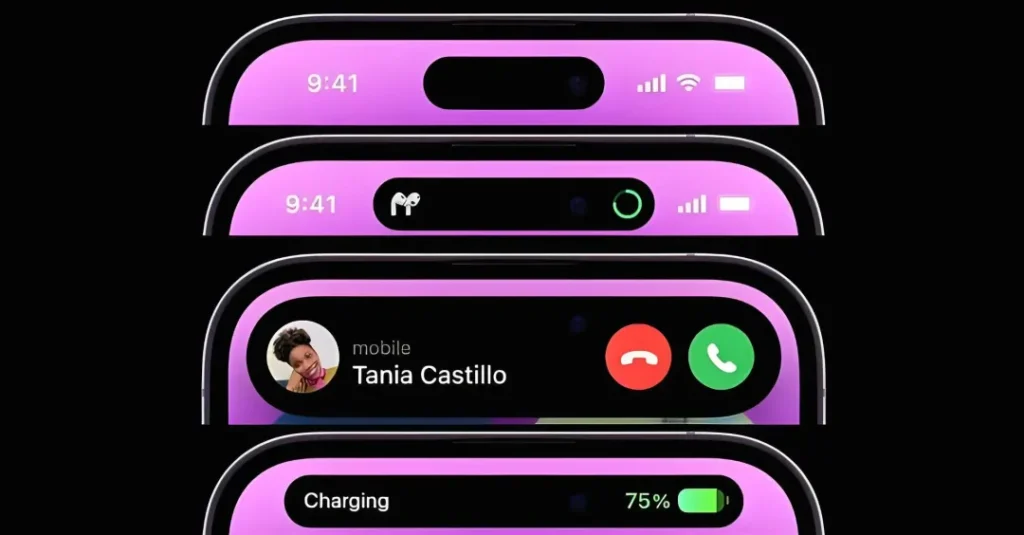
This kind of screen is not something new; it has already been used in the Apple Watch S10. Its function is to significantly reduce power consumption, and the brightness at an inclined angle will also be further improved.
So, what about the design of the back and the middle frame?
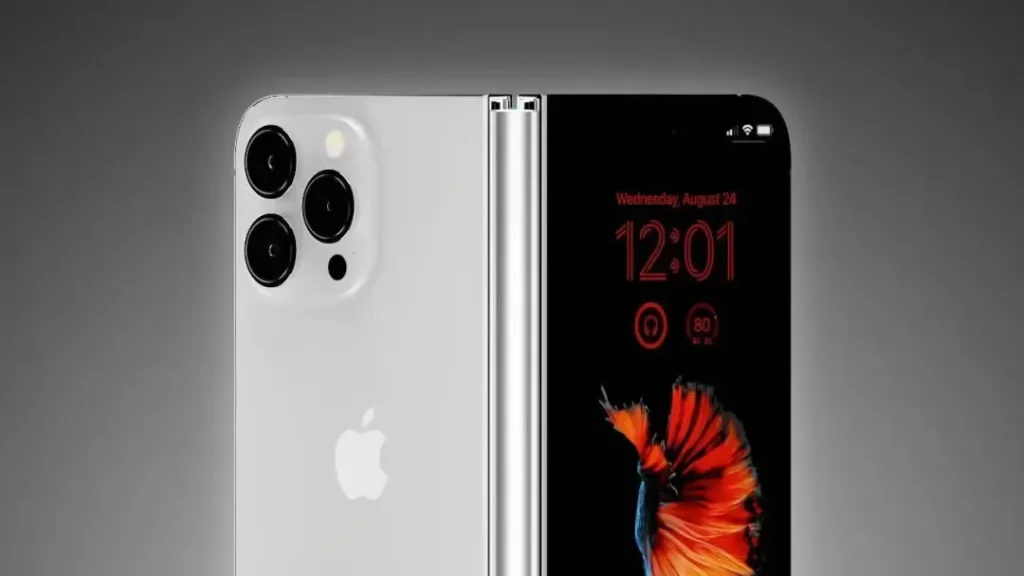
The answer is: a complete piece of glass.
Yes, given the codename “Glasswing”, since they are going for something radical, they might as well go all the way.
According to 爆料,the iPhone 20th Anniversary Edition will completely abandon the metal middle frame and use a complete piece of heat – bent glass as both the middle frame and the back cover.
It’s a bit like the Unibody one – piece ceramic design of another brand. Apple may go even further by using laser etching technology to connect the back cover, middle frame, and screen glass together, and turn all physical buttons into virtual pressure – sensitive buttons.
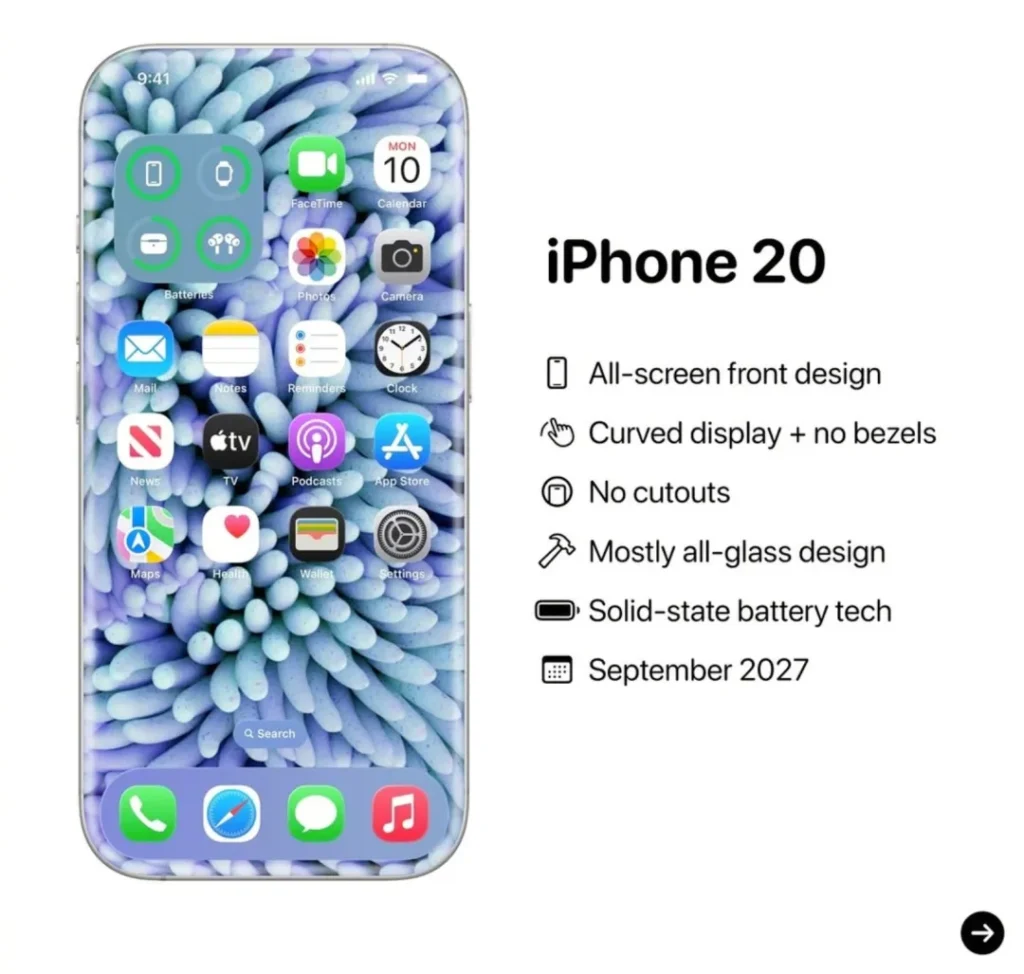
It can be imagined that the overall feel of the phone will be as round and smooth as a pebble.
However, the price of being too smooth may be high.
After all, metal materials have high toughness. If you drop a metal – framed phone, it may just get a dent, and you might just sell it for a little less when you trade it in. But for glass, not only is the middle frame likely to crack, but the front and back glass panels attached to the middle frame will also probably be damaged.
It’s hard not to think that this is a plot by Apple to make money from repair fees. Let’s just hope that the third – generation super ceramic crystal glass can be more durable.
In short, the iPhone 20th Anniversary Edition can be simply understood as “a journey of glass art”.
The “Liquid Glass” on iOS 26 this year is very likely a preview for this product.
With an all – glass body and a liquid glass system, this combination is also likely to become Apple’s next decade of classic design, just like the iPhone X.
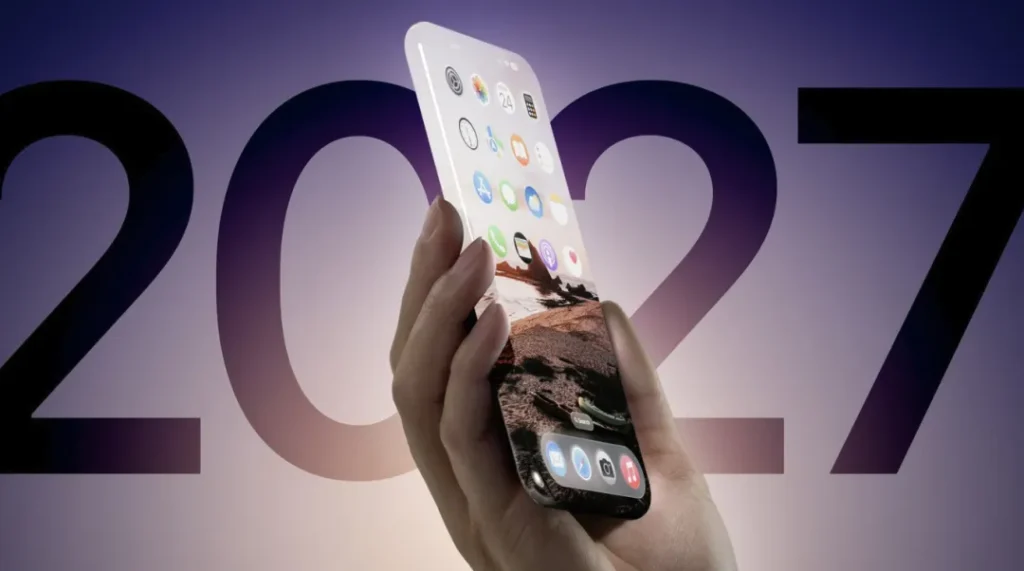
For such a groundbreaking product, the starting price of $2000 (about 14,361 yuan) predicted by analysts doesn’t seem that expensive.
Of course, Rome wasn’t built in a day, and you can’t achieve everything at once. The 2027 event is still a bit far away for us.
But next year, Apple will also launch a special edition phone – the iPhone Ultra.
Yes, Apple’s thinking is different from ours. While the domestic “Ultra” models are imaging flagships, the iPhone Ultra is a genuine foldable phone.
As the first iPhone to carry the “Ultra” name, it really has a lot of innovative features.
For example, it uses under – screen camera technology. The inner screen is a true full – screen without any cutouts, while the outer screen uses a single cutout design for the front camera.

Yes, there will likely be no Dynamic Island or Face ID. The biometric recognition will be a capacitive fingerprint sensor, similar to the iPad Air, integrated into the power button.
When it comes to foldable phones, the issue of creases cannot be ignored. It can only be said that Apple is indeed Apple. Although Samsung’s own foldable phones still have creases, Apple is pulling Samsung along to research “zero – crease” panels.
It is said that the inner screen protective glass may also use the innovative “Hybrid UTG (Ultra – Thin Glass)” technology. The folding area is thinned to ensure flexibility, while other areas are thickened to enhance protection, satisfying two needs at once.
The hinge part is also likely to use “liquid metal”. Combined with the new “virtual pivot point” hinge design, it can improve durability significantly.

According to the latest supply chain news, the iPhone Ultra will start production this autumn and is expected to be a “One more thing” at next year’s iPhone 18 series launch event.
In terms of hardware, it is indeed almost fully loaded. Of course, there is a price to pay.
Some netizens estimate that the price will start at 8,000 yuan. I think this netizen is still too naive.
For Apple’s first large – screen foldable phone, the first under – screen camera, a new hinge design, and a crease – free screen, it should at least start with a 1 (meaning over 10,000 yuan).
But putting aside the price, I am quite interested in these two special edition phones. After all, the iPhone has really had no new hardware features in recent years.

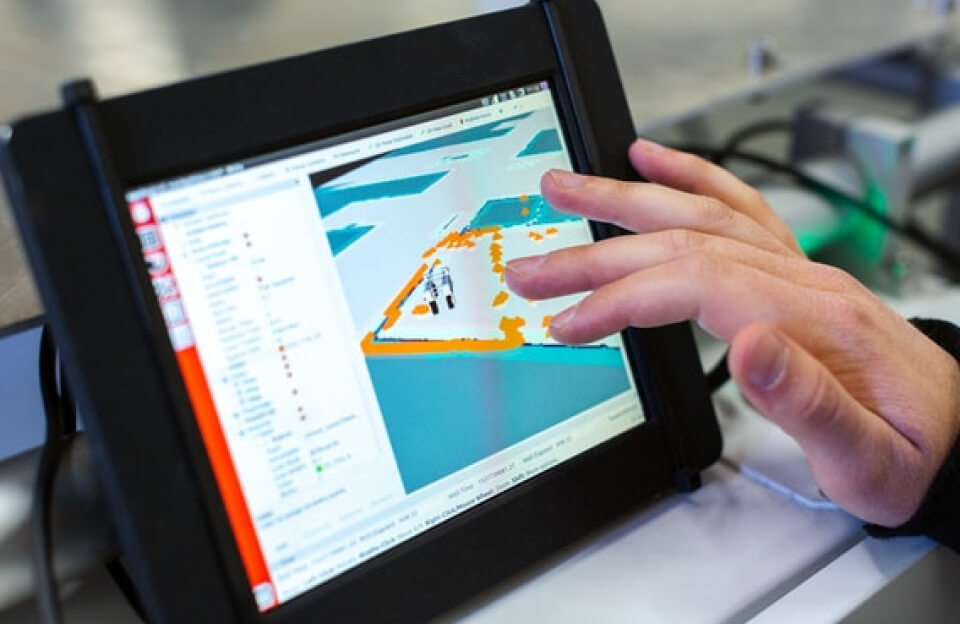
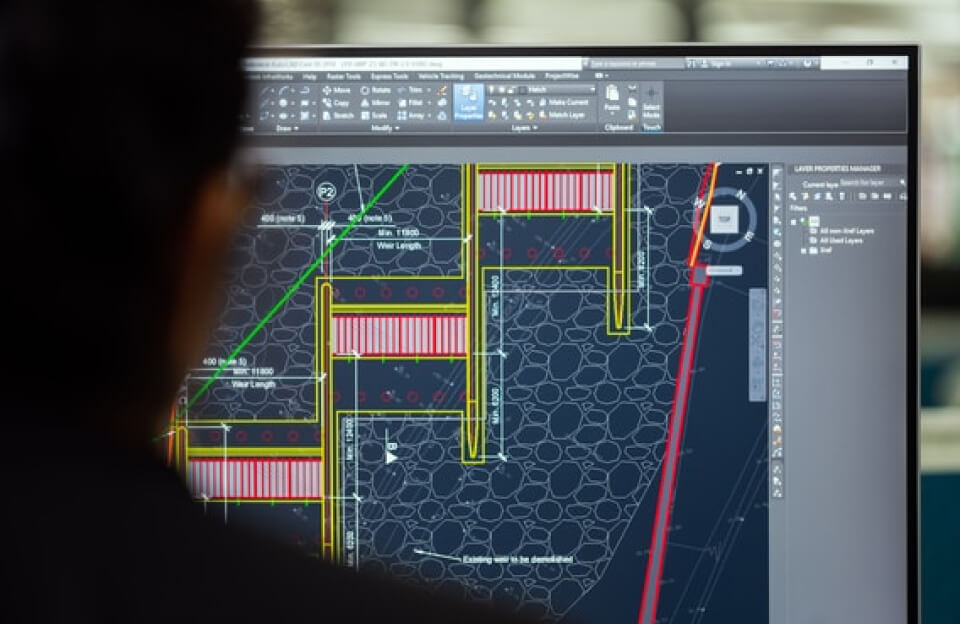
2eozmo
wjuigf
x7lnqb
hwkqmk
t787q9
03pdh6